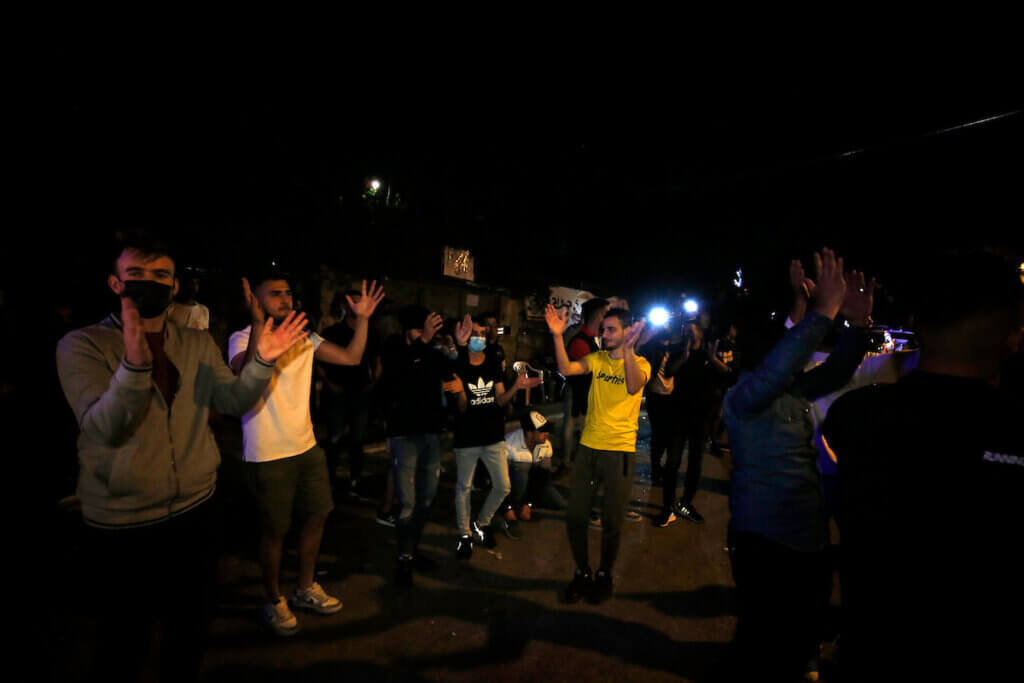Four Palestinian families are dauntlessly protesting their imminent forced expulsion from their homes in the Sheikh Jarrah neighborhood in East Jerusalem – homes where they have lived for decades. If the Israeli Supreme Court decides in favor of Israeli settlers, and if the petition the families filed with the Supreme Court is denied, the ownership of the houses will be handed over to a settler organization. Eight other families in the neighborhood are set for the same fate later this year.
The families’ outcry has ignited and led a widespread campaign to save the neighborhood.
Part and parcel of Jerusalem’s historical identity
For its strategic and central location in Jerusalem, the Sheikh Jarrah neighborhood is not a new target of settler organizations’ activities. In 2009, Israeli police uprooted two families from Sheikh Jarrah. A total of 53 people, including 20 children, were expelled from their homes, “while their belongings were loaded onto a truck and later dumped on the street close to UNRWA’s headquarters.”
The case of Sheikh Jarrah is part and parcel of the case of Jerusalem – a city divided by the war surrounding Israel’s establishment in 1948. Its western part was conquered by Israel, while the eastern one came under Jordanian control. Following the 1967 war, Israel occupied the rest of the city. It has been 53 years of occupation. Israel continues to unrelentingly change the face of Jerusalem – always at the expense of Palestinian indigenous existence. It unilaterally annexed the occupied Eastern part. It has, to date, expropriated from Palestinians nearly one-third of the land in East Jerusalem, and built 11 Jewish-only neighborhoods on them. It revoked the permanent resident status of at least 14,701 Palestinians from East Jerusalem. It facilitated the settlement of more than 200,000 of its civilian population in East Jerusalem. And it cut the city off from the occupied West Bank, to which it has been historically closely connected, by settlements and an eight-meter-high concrete wall. All of this Israel has done in violation of international law.
Colonial in nature, the Judaization of the land between the Jordan River and the Mediterranean has been feeding on ethnic cleansing of Palestinians. The expulsion of Palestinian families from Sheikh Jarrah is one example. Indeed, Jerusalem is held hostage to Israel’s Judaization schemes.

The growing campaign for Sheikh Jarrah
A new generation of Palestinians is leading the struggle for Sheikh Jarrah. It is young, uncompromising, and, thanks to social media, better connected than ever before. It is fed up with the ageing Palestinian leadership, yet not once has had the chance to vote. Siblings Muna and Mohammed El Kurd, whose family is among those facing expulsion, have been two of the many powerhouses effectively advocating for their case through traditional and social media. “Our houses in Sheikh Jarrah are your houses. Be sure that if Sheikh Jarrah gets controlled [by the Israeli settlers], the rest of Jerusalem will follow,” Muna said in an interview. Her brother, Mohammed, says: “I want to be able to look back at this and say: ‘If we were thrown out in the street, we were thrown out with our dignity.”
Palestinian Jerusalem has said its word, loud and clear. In the past week, thousands of mostly young Palestinians protested in the neighborhood and in the rest of Jerusalem, including at Al-Aqsa mosque. These protests have been met with incremental force, as Israeli police used stun grenades, water cannons and skunk water. Protestors have been brutalized and dozens of them have been arrested.
At this critical point, young activists and supporters are harnessing the power of social media. It is being utilized to gain international solidarity as well as to organize internally. Most Palestinians in their separated clusters cannot enter Jerusalem, and this adds to the value of social media in connecting Palestinians across walls and borders and building support systems among them. Activists are also using creative ways to cover the events unfolding on social media. For example, protestors are going live on Instagram with influencers on the platform, which multiplies the number of viewers. Social media platforms’ censorship of Palestinian content and collusion with Israeli institutions seems to have only motivated activists to flood the internet with more coverage.

The plight of a new Palestinian generation
The status quo across Israel/Palestine, manufactured by decades of Zionist policies, is neither sustainable nor by any standards acceptable. Young Palestinians are growing up to find themselves inevitable targets of Israeli Apartheid, as a recent 200-page report by Human Rights Watch concludes. As any other people would, Palestinians squarely reject such fate. It cannot be accepted by the international community, either.
Faris Amer
Faris Amer is a Palestinian activist and student of Economics at the University of Jordan in Amman.
 RSS Feed
RSS Feed













 May 10th, 2021
May 10th, 2021  Awake Goy
Awake Goy  Posted in
Posted in  Tags:
Tags: 
















